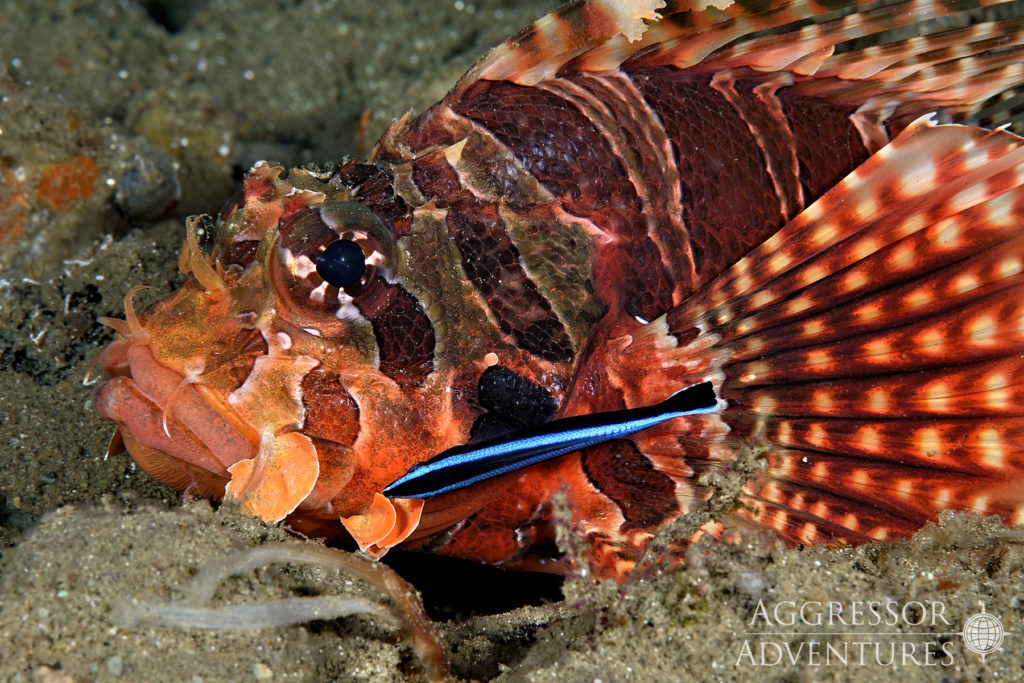By Raquel Gilliland, SOC Education/Outreach Intern
Welcome to another Creature Feature, where we introduce you to a new and fascinating animal. Today we’re learning about red lionfish (Pterois volitans). These fish can be identified from their red, white, and black stripes that serve as a warning coloration to other animals about their venomous spines. A puncture from the spines along their dorsal and pectoral fins that can cause extreme pain to humans and even death in marine animals. Lionfish belong to the family Scorpianidae which includes hundreds of species of fish that all have sharp spines that secrete venomous mucus.

Lionfish are native to the indo-pacific region but have found their way into the Caribbean and along the east coast of the United States, becoming a problematic invasive species. An invasive species is one that is not native to a specific ecosystem and has a tendency to spread to a degree believed to cause damage to the environment or our human economy and health. How can one fish cause so many problems? First, lionfish have an extremely high fecundity rate, meaning they reproduce often and in large quantities. Lionfish reach sexual maturity after just one year, and one female lionfish can produce two egg sacks every four days with each egg sack containing up to 15,000 eggs. The result can be two million eggs per female per year. These egg sacks can also float along the surface of the water for hundreds of miles, dependent on currents, increasing the geographic reach and range of the lionfish invasion in the Atlantic. Not all eggs survive, and not all juveniles mature to adulthood. But the ones that do can grow up to 47 cm (18.5 in) in length! As adults, these fish eat any other fish that they can fit in their mouths and can eat up to 90% of their body weight every day. Lionfish have also been found in mangrove systems, which act as a nursery for the young of many coral reef fishes, including economically important species such as groupers and snappers.
Secondly, lionfish have no natural predators in the Atlantic Ocean, making them virtually indestructible. However, there is hope with humans as the predators. As lionfish took over dive sites and became more noticeable, divers discovered they could spear a lionfish quite easily, as they do not swim away from divers. Today, a small sling spear is the most popular form of harvesting lionfish at collecting derbies across the Caribbean, Bahamas, and Florida. Soon, the culinary world took note of the new opportunity and found that lionfish is a white, flaky, delicate fish excellent for gourmet dishes. Because it is invasive in the Atlantic, it is one of the most sustainable seafood choices for consumers.
Our coral reefs are complex systems, where each species has a specific role to play. Just as lionfish are important to a stable reef system in their native Indo-Pacific oceans, newly introduced species have the potential to wreak havoc when introduced to a new ecosystem. One of our priorities here at Sea of Change Foundation is to work on the conservation and resilience of reef ecosystems, and we encourage divers in the Atlantic to participate in their local lionfish derby and stay up-to-date with regulations and policies on how to prevent the spread of invasive species.




